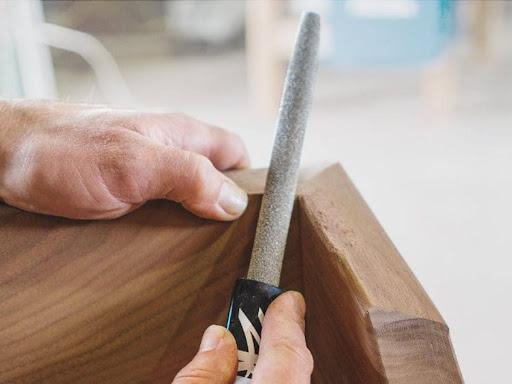For woodworkers, the difference between a rough draft and a polished masterpiece often comes down to finishing details. While power tools shape wood quickly, it is hand-finishing that delivers precision and artistry. A fine rasp stands out as one of the most versatile tools in this stage of woodworking, capable of refining curves, smoothing transitions, and shaping intricate details. Its unique cutting teeth and controlled removal of material make it invaluable for projects that demand accuracy.
Why A Fine Rasp Matters In Woodworking
Unlike coarse rasps or files, a fine rasp allows controlled shaping without leaving deep gouges in the material. Its teeth are designed to remove thin layers of wood, giving artisans more control when working on delicate curves or transitions. This makes it the perfect tool for projects that require a high-quality finish before sanding and polishing.
Fine rasps also reduce the risk of over-cutting, a common issue when using aggressive tools. For hobbyists and professionals alike, this control ensures a smoother workflow and better results across a variety of woodworking applications.
Furniture Detailing
One of the most common uses of a fine rasp is in furniture making. Chair legs, armrests, and table edges often feature curved designs that cannot be achieved cleanly with saws or rotary tools. A fine rasp helps shape these elements with precision, ensuring that every contour feels smooth to the touch.
For artisans working on custom pieces, such as hand-carved chairs or decorative cabinets, the ability to refine intricate areas with a fine rasp ensures durability and comfort without sacrificing aesthetic appeal.
Instrument Crafting
Musical instruments demand precision not just for aesthetics but for functionality. Guitars, violins, and woodwinds all rely on carefully carved components that influence tone and playability. A fine rasp allows luthiers to refine necks, fingerboards, and sound holes with the subtlety required to maintain both beauty and acoustic quality.
In this field, even minor imperfections can affect sound. The rasp’s ability to remove just the right amount of material ensures that craftsmanship aligns with performance requirements.
Decorative Carvings
When creating decorative elements—whether for furniture, architectural trim, or standalone art pieces—a fine rasp is essential for shaping fine curves, scrolls, and patterns. Its precision makes it possible to bring out intricate details that elevate a design from ordinary to extraordinary.
Paired with chisels and carving knives, the rasp adds depth and refinement, bridging the gap between rough shaping and smooth sanding. It’s particularly useful in projects where symmetry and balance are critical.
Finishing Edges And Joints
Beyond decorative work, a fine rasp is invaluable for ensuring tight, clean joints. Woodworkers often use it to refine tenons, dovetails, and other joinery where exact fit determines structural integrity. With careful strokes, a rasp can correct small imperfections that power tools may leave behind.
In cabinetry and fine furniture, these adjustments ensure longevity and craftsmanship that stands up to daily use. The tool’s ability to fine-tune edges makes it indispensable in professional workshops.
The Role Of Traditional Hand Tools
Although modern workshops are filled with machinery, traditional tools still hold a vital place. For instance, hand rasps remain irreplaceable when tactile control is required. Unlike machines, which remove material rapidly, hand tools allow artisans to feel resistance, texture, and progress as they shape wood. This feedback fosters accuracy and artistry, elements central to true craftsmanship.
Conclusion
A fine rasp may appear simple compared to modern woodworking machinery, but its precision and versatility make it an essential tool for detailed projects. From refining curves in furniture to shaping musical instruments and decorative carvings, its ability to remove just the right amount of material gives artisans unmatched control.
For woodworkers expanding their toolkit, pairing rasps with complementary tools ensures efficiency and precision across projects. In fact, many professionals combine the subtle shaping ability of a fine rasp with modern solutions like rotary carving tools for wood, achieving both speed and detail without compromise. Together, these tools ensure every project meets the highest standards of craftsmanship.

